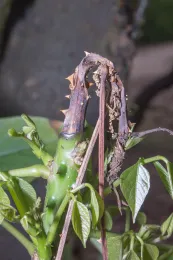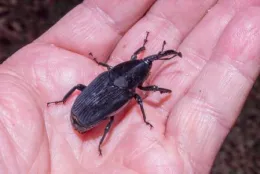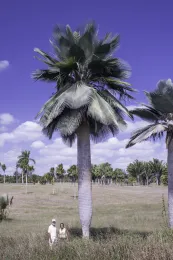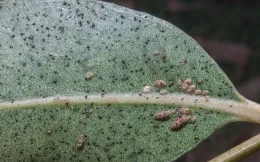2016 Articles:

The Erythrina stem borer (sometimes known as the Erythrina twig borer) (Terastia meticulosalis) is a new and potentially severe pest of Erythrina or coral trees in California. Here we illustrate and discuss its taxonomy, identification, distribution, life cycle, damage, and management strategies. DOI: https://doi.org/10.21414/B1D01R

The ficus leaf rolling psyllid (Trioza brevigenae) is a new pest of the Indian laurel tree or Chinese banyan (Ficus microcarpa) in California. It distorts new growth by forming it into a tight role. Here we illustrate and discuss the history of its detection, damage symptoms, description of the pest, and possible management strategies. DOI: https://doi.org/10.21414/B18598

The South American palm weevil (Rhynchophorus palmarum), one of a genus of unusually destructive beetles well known for attacking palms, is now destroying palms (Arecaceae), mostly Canary Island date palm (Phoenix canariensis) in the San Diego area. Here we provide information about the names, a description, hosts, distribution, natural history, damage symptoms, potential involvement in red ring disease, detection and management, and disposal strategies for the pest. DOI: https://doi.org/10.21414/B14G60

The exceeding handsome and imposing but critically endangered Copernicia fallaensis (Arecaceae), considered by some to be the greatest fan palm of them all, is illustrated and discussed, including its history, a description, distribution and ecology, ethnobotanical uses, and comparison to other species. DOI: https://doi.org/10.21414/B10P42

The bronze bug (Thaumastocoris peregrinus), a serious and potentially damaging, sap-sucking insect pest of eucalypts (genera Corymbia and Eucalyptus), has very recently been detected in southern California. Here we provide information on its history, identification, biology, distribution, symptoms, hosts, and possible management strategies. DOI: https://doi.org/10.21414/B1W013
